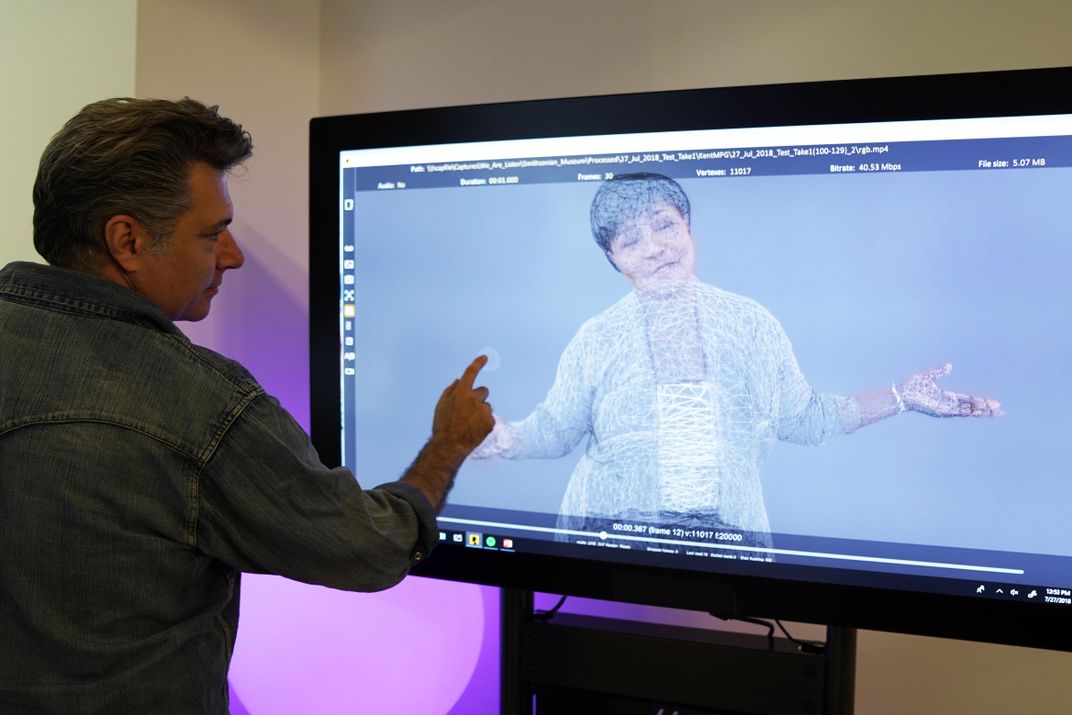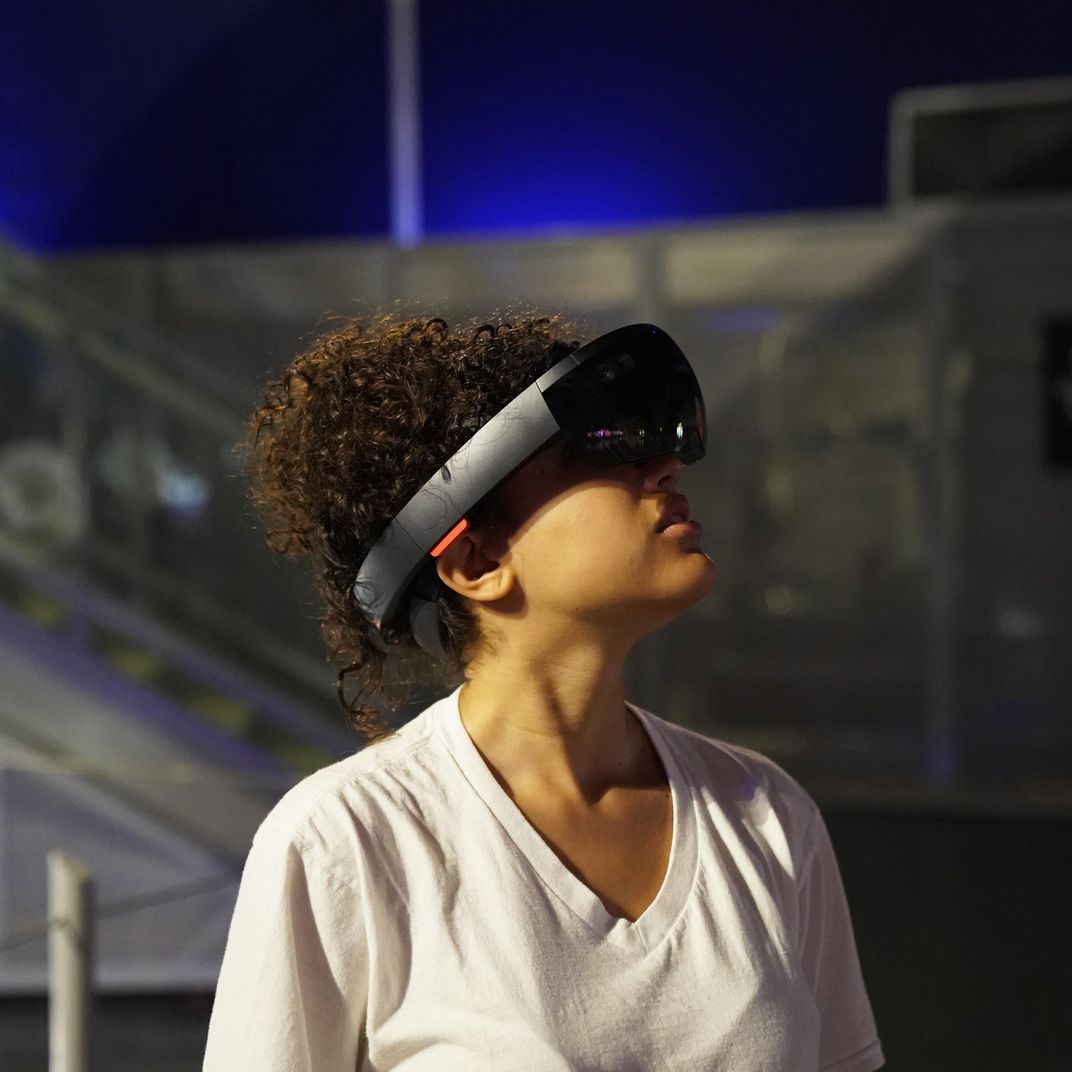A Hologram of the First Woman of Color in Space Debuted on Museum Day
An installation at the Intrepid Sea, Air and Space Museum featuring Mae Jemison highlights diversity in space exploration
/https://tf-cmsv2-smithsonianmag-media.s3.amazonaws.com/filer/4a/c9/4ac9a69b-4a21-4b83-819c-255c9c49d6dd/defying_gravity_dr_jemison_hologram_web.jpg)
Appearing beneath the space shuttle Enterprise, a life-size hologram of astronaut Dr. Mae Jemison speaks about the contributions women have made to the space program. Via her projected image, Jemison recalls her time as a child, saying, “I followed space exploration closely, but I was always irritated that there were no women front and center. And while people tried to explain to me why, I knew they were wrong.”
Jemison became the first woman of color in space in 1992, an experience she recounts in “Defying Gravity: Women in Space,” an installation at the Intrepid Sea, Air & Space Museum in New York City. In the installation, Jemison appears as a 3D rendering and discusses her career and those of other women involved in the space program. The installation opened on September 22 to coincide with Museum Day, an annual Smithsonian magazine event offering free entry to more than 1,500 museums.
For “Defying Gravity,” visitors wear Microsoft HoloLens mixed-reality headsets and walk around as Jemison narrates. (Disclaimer: Microsoft is a sponsor of Museum Day) Unlike virtual reality, which is closed to the surrounding world, mixed reality adds images to existing surroundings. Holograms appear to illustrate what she says, including a life-size rendering of an astronaut doing a spacewalk, appearing tethered to the real-life Enterprise above the installation.
Among the women Jemison highlights are those who around a century ago worked at Harvard University as "human computers" and calculated the positions of stars; Katherine Johnson, the NASA mathematician whose story appears in the 2016 film Hidden Figures; Patricia Cowings, a psychophysiologist who has helped astronauts readjust after space travel; and astronaut Peggy Whitson, who held the record for most cumulative time in space when she retired from NASA last year.
“Women don’t need to ask permission to be included,” the Jemison hologram says. “We’ve been here. We are here.”

The team behind the installation found the Intrepid Museum, which includes the decommissioned aircraft carrier USS Intrepid, to be a unique setting for holograms, according to Sarah Ibrahim, technical director at Listen., an agency that worked with Microsoft and Smithsonian on the project. “In a place like the Intrepid,” she says, “there’s just so much to look at and so much to augment.” Jemison helped with the script for her narration. “She’s this amazing example of someone who really fought her way through. . . and continues to fight for that kind of inclusion,” Ibrahim says.
To become a hologram, Jemison visited Microsoft’s Mixed Reality Capture Studio in San Francisco in August so that 106 cameras could record her image. “It’s mentally uncomfortable,” the retired astronaut joked. “You’re not used to people taking pictures behind you, right? And then you know that that’s going to be around for a while.”
On stage at the event with Smithsonian editor in chief Michael Caruso, Jemison discussed growing up on Chicago's South Side and how she knew as early as kindergarten that she wanted to be a scientist. Back then, she recalled thinking, “I just thought it was the dumbest thing in the world that we didn’t have women astronauts.” (She pointed out that in 1963, Valentina Tereshkova, a Soviet cosmonaut, became the first woman to travel in space.) “I knew that I had enough energy and courage and strength and everything to go up,” she said. “It didn’t discourage me. I just figured that the world was going to change.”
She arrived at Stanford University as an undergraduate at 16 and later attended medical school at Cornell University. After graduating, she worked as the area Peace Corps medical officer in Sierra Leone and Liberia. “I like to explore,” she told the audience. “If I could figure out a way to go somewhere, I did it.”

The place she decided to go next was much farther away. She said that one day she called up the Johnson Space Center in Houston, Texas, and told the person on the phone that she wanted to apply to be an astronaut. NASA apparently mailed her an application, and she was selected for the program in 1987.
She went into space five years later, on the space shuttle Endeavor. She recalled seeing her hometown from the shuttle window soon after launching: “It was the most incredible thing. It looked just like the map of Chicago when I was a little kid.” She recalled thinking about how she had once been a little girl in that city looking up at the sky.
During her eight-day mission, she served as science mission specialist and conducted experiments. One of them, which her hologram mentions in “Defying Gravity,” involved testing whether frog embryos could organize normally in the weightlessness of space, since on Earth they can only become tadpoles if a certain portion is facing up. Jemison found that even in weightlessness the cells organized normally.
But Jemison’s contribution to the space program goes far beyond tadpoles, and she said more women and people from diverse backgrounds should have the opportunity she did.
“We will only get our best technology, we will only get our best solutions and policies in this world, when we bring the full talent that we have available to us,” she said.
/https://tf-cmsv2-smithsonianmag-media.s3.amazonaws.com/accounts/headshot/MAx2.jpg)
/https://tf-cmsv2-smithsonianmag-media.s3.amazonaws.com/accounts/headshot/MAx2.jpg)